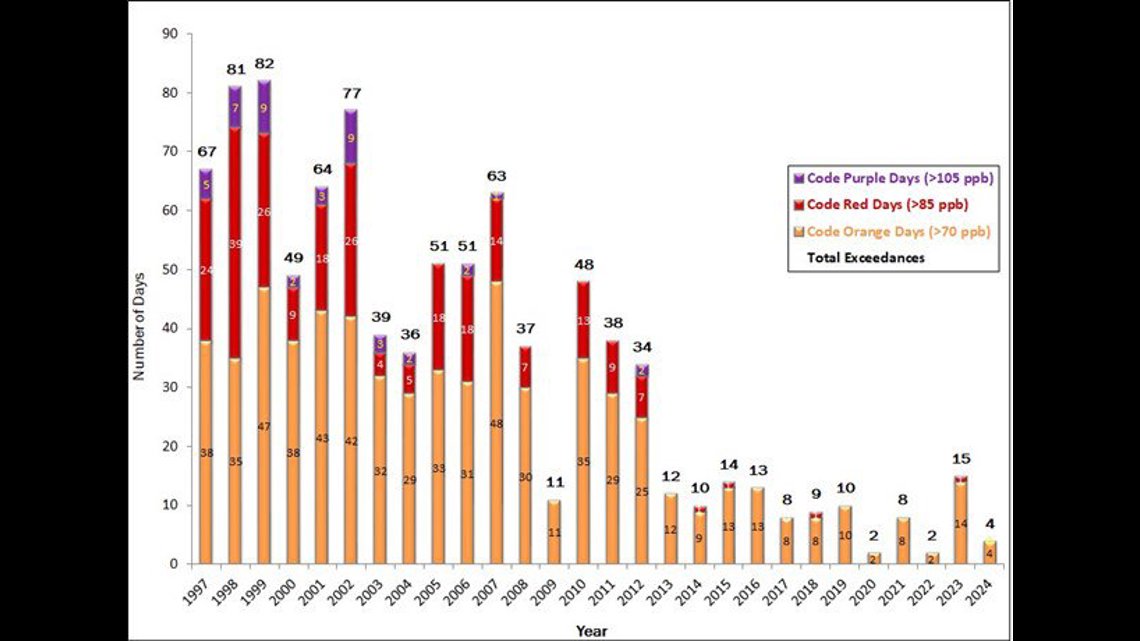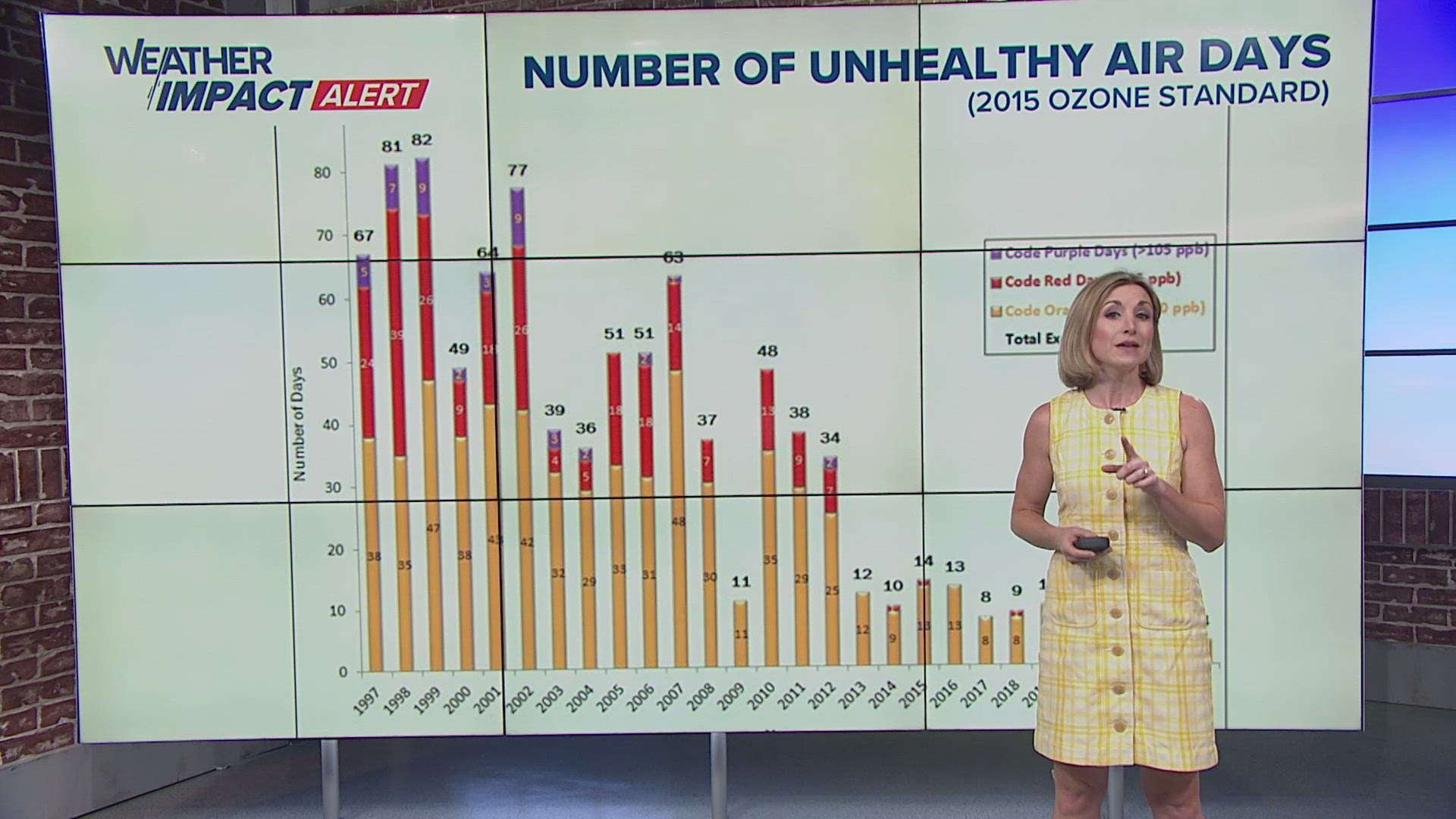WASHINGTON — Our summertime air quality impacts come in the form of ozone. The colorless, odorless gas forms on hot summer days when solar radiation quite literally cooks our everyday pollutants. But we have seen a huge improvement in high ozone days during the summer.
This chart shows a significant decrease in the number of unhealthy air days according to the 2015 ozone standard. The peak was in 1999 when D.C. saw 47 code orange days, which is unhealthy for sensitive groups, 26 code red days, which is unhealthy for everyone, and nine days with code purple air quality which is considered very unhealthy. So far this year, we’ve only had four code orange days.
Number of Unhealthy Air Days (2015 Ozone Standard)


We largely have legislation to thank. All six pollutants regulated by the Clean Air Act have shown a downward trend in the region. All but one pollutant, ground-level ozone, meets federal health-based air quality standards. Federal, state, and local measures that have improved the region's air quality, include:
- Acid Rain program (Phase 1 -1996/Phase 2 -2000)
- Tier 2/3 (2004/2017)
- Heavy-Duty Diesel Vehicle Rule (2004/2007)
- NOx SIP Call (2004)
- Clean Air Interstate Rule (CAIR)/Cross-State Air Pollution Rule (CSAPR)/CSAPR Update (2009/2015/2017)
- District of Columbia, Maryland, and Virginia’s Vehicle Inspection & Maintenance programs
- Local gas can replacement program
- Local renewable energy & energy efficiency programs
A few other reasons why ozone pollution is now consistently below Code Orange criteria include the large reduction of nitrogen oxide emissions from power plants in the Ohio River Valley. Nitrogen oxide emissions from power plants over the entire U.S. have dropped ~90% over the past 30 years. Experts say this is probably an underestimate of the power plant pollutants affecting our area since the remaining power plants emitting large amounts of nitrogen oxide are primarily located in the Central and Western US. DC benefits more than almost any other city since we are located at the downwind of many coal power plants in the Ohio River Valley.
Another reason is due to the improvement of emissions from personal vehicles. D.C. has the largest EV population out of any east coast city. Newer cars also produce significantly fewer harmful pollutants than vehicles built 20 years ago.
The D.C. area also does not have a large proportion of industrial emissions, and fewer diesel trucks than most cities. This becomes super apparent driving the highways of D.C. vs. a city like Chicago. Because of this, changes in power plant emissions and personal vehicles benefit us more than most other cities - including Baltimore where air quality is almost always worse than metro D.C.

